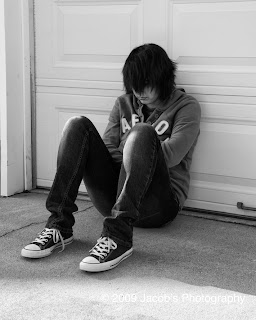What is the difference between the two file types? Well, JPEG (aka Joint Photographic Experts Group) is a is a commonly used method of compression for photographic images. The degree of compression can usually be adjusted, allowing a selectable trade off between storage size and image quality. JPEG typically achieves 10:1 compression with little perceptible loss in image quality. Hmmm ... "perceptible loss in image quality". Even though there is the word "little" in front of perceptible there is still a loss in image quality. JPEG compression, in my opinion, is a lousy format that throws away the data that you can’t see in order to give you smaller file sizes, but if you don't need high quality images and need a small file size JPEG is definitely for you.
Then what is RAW? A RAW image file contains minimally processed data directly from your camera's image sensor. RAW format is completely loss-less and keeps every piece of data your camera captures (even if you don’t need it). There is one down side though ... RAW format requires a good bit more space on your memory card because it does store every bit of information from your camera's sensor. However, a RAW file isn’t technically an "image file" (in the true since of the word). It has to be converted by special software on your computer and processed in order to be suitable for printing or exporting for other uses. So, why shoot in RAW format? Since RAW format stores every bit of data from your camera's sensor if you screw up a picture it is almost always fixable. Lets say you shoot a picture on a bright sunny day (a once in a lifetime photo) and you don't realize that it was overexposed until you get home and view it on you computer -- if you shot in RAW you could easily adjust the exposure to be properly exposed. So to sum this up, If you are not going to bother processing your photos, RAW is not for you.
So what does all of this mean for your pictures? Well there are pros and cons to shooting both RAW and JPEG images. Many people choose to shoot in JPEG format because it is a universal format which can be taken directly off of the camera and shared via email or published to the Internet. JPEG format also requires less storage space on your camera and computer. RAW, on the other hand, requires some post production work. You will need software to properly edit and export your photos. This software sometimes comes with you camera, and sometimes needs to be purchased. Programs like Aperture (from Apple), Adobe Lightroom, and Adobe Camera RAW in Photoshop are great programs for editing RAW files. I, being a Mac guy, prefer Aperture but I also use Photoshop quite a bit. But even if you view photography as a simple hobby, it is still worth investing in photo-management software like Aperture or Lightroom that make organizing, keywording, searching, and editing your RAW photos as simple as working with JPEGs.
I sure hope this helps you with your decision over the "Great Debate" of RAW vs. JPEG.

